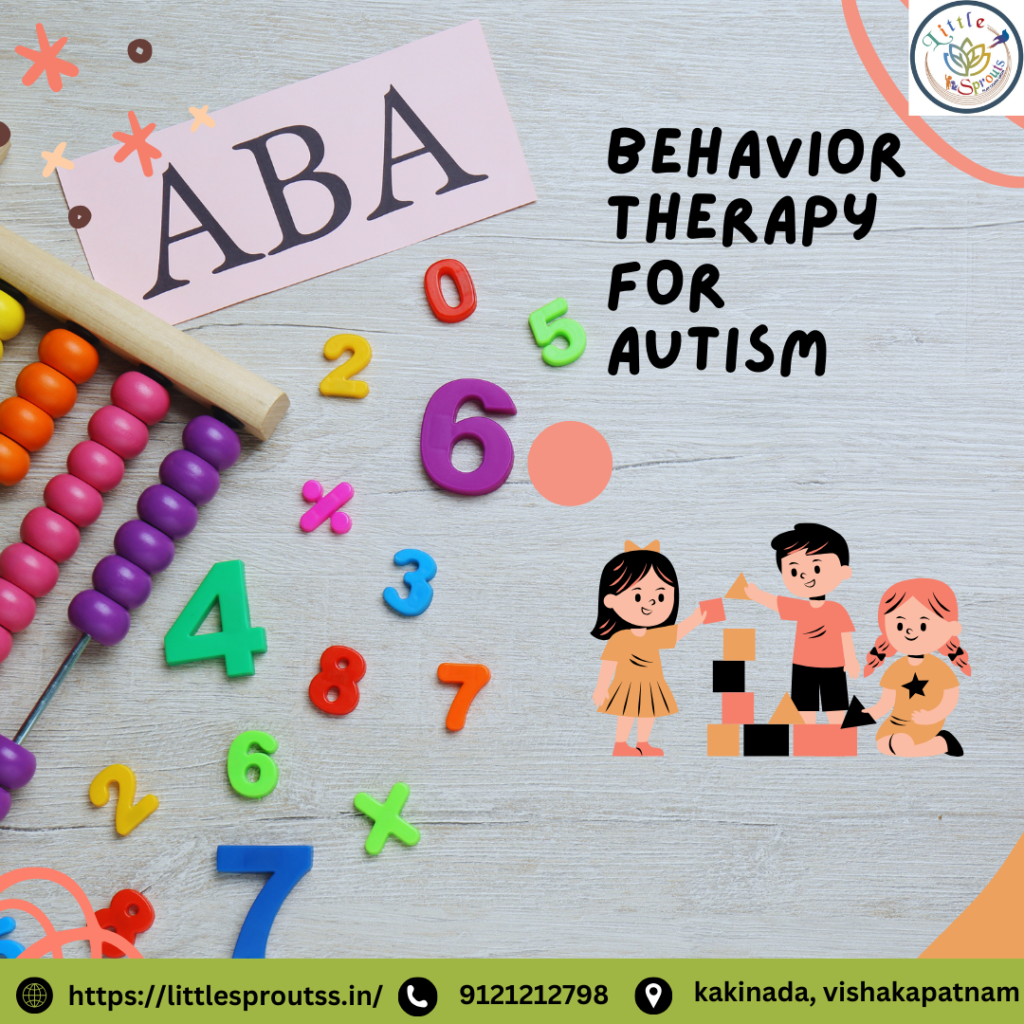
What is Behavior Therapy for Autism? Autism Spectrum Disorder, or ASD, is a developmental condition that brings with it the challenges of problems in communication, social interaction, and repetitive behaviors. Among the various interventions available, one of the most effective approaches has been behavior therapy to support the individual with autism to reach his or her full potential. So, what exactly is behavior therapy, and how does it help individuals with autism? In this article, we’ll explore the fundamentals of behavior therapy, its different forms, and its significant impact on individuals with ASD.
understanding What is Behavior therapy for autism?

Behavior therapy is a general term that refers to evidence-based interventions aimed at changing behavior and improving life skills. In essence, behavior therapy is based on the principles of behaviorism, a psychological theory that focuses on observable behaviors and how they are affected by environmental factors. For people with autism, behavior therapy is used to:
- Reduce challenging behaviors such as aggression or self-injury.
- Enhance communication and social skills.
- Promote independence in daily activities.
Key Principles of What is Behavior therapy for autism?
1.Positive Reinforcement:
The heart of behavior therapy is positive reinforcement. Desirable behaviors are rewarded by presenting the person with pleasurable stimuli, such as praise, treats, or activities they like. The individual repeats the behavior because of the pleasure.
2. Structured and Individualised Approach:
No two people have autism. Every intervention through behavior therapy is focused on the person’s strengths, challenges, and goals, ensuring interventions are effective and meaningful.
3.Data-Driven Interventions:
Behavior therapy involves a collection of data to follow and change strategy. This approach assures a scientific result in the measurement of output.
Different Types of What is Behavior therapy for Autism?
1. Applied Behavior Analysis (ABA)
ABA has been one of the most practiced and researched forms of behavior therapy to date. Applied behavior analysis consists of breaking big tasks into much smaller, therefore manageable steps for teaching through the repetition and use of reinforcement. ABA can be used to improve skills such as:
- Communication
- Social interaction
- Academic abilities
- Daily living task
2. Cognitive Behavioral Therapy (CBT):
CBT is particularly useful for individuals with high-functioning autism. It helps individuals identify and manage negative thoughts and emotions that might lead to anxiety, depression, or obsessive behaviors. Through structured sessions, CBT teaches coping mechanisms and problem-solving skills.
3. Early Start Denver Model (ESDM):
For young children with autism, ESDM draws from ABA and operates as a play-based intervention. Therefore, it covers improving the following aspects:
- Social interaction
- Language development
- Cognitive skills
4. Pivotal Response Training (PRT):
PRT is a naturalistic, child-led method of intervention that focuses on pivotal areas, including motivation, response to multiple cues, etc. The aim here is the enhancement of general learning and communication by focusing on critical behaviors.
Who Benefits from Behavior Therapy?
what is Behavior therapy for autism? Behavior therapy is suitable for anyone along the autism spectrum, from a non-verbal child to adults with high-functioning autism. The earlier the intervention begins, however, the greater its impact. Studies show that early intervention significantly improves developmental outcomes.
How Behavior Therapy Supports Families
Behavior therapy benefits not only the individual but also empowers families. Parents and caregivers often receive training in:
- Reinforce positive behaviors at home.
- Manage challenging situations effectively.
- Understand their child’s unique needs and preferences.
This collaborative approach creates a supportive environment that fosters growth and learning.
Challenges in Behavior Therapy
While behavior therapy has proven to be highly effective, it is not without challenges.
1. Time and commitment:
Therapy requires a lot of time. Most therapy sessions take hours a week. Consistency and dedication are key to successful therapy.
2.Cost:
Comprehensive therapy programs are costly, putting them out of reach for some families. But many insurance programs and government programs can help defray the costs.
3. Generalisation of Skills:
A common challenge is that skills learnt in therapy settings do not generalise to real-life situations. Therapists work closely with families and schools to address this.
The Role of Therapists in Behavior Therapy
The therapists, often BCBAs (Board Certified Behavior Analysts), design and implement the behavior therapy program. They perform the following activities:
- Conduct initial assessments to understand the individual’s needs.
- Develop personalised intervention plans.
- Monitor progress through data collection and analysis.
- Adjust strategies based on the individual’s response to therapy.
Success Stories: Real-Life Impact of Behavior Therapy
Many families of children with autism and those individuals themselves have been transformed through behavior therapy. Some examples include
- A non-verbal child learns to use basic sign language to express needs.
- A teenager becomes more confident about socialising with peers.
- An adult with autism can become independent in daily living activities
Future Directions in Behavior Therapy
What is Behavior Therapy for autism? Behavior therapy continues to be shaped by developments in technology and research. More promising applications in the future may include virtual reality for social skills training and machine learning for the personalisation of interventions.
Conclusion of What is Behavior therapy for autism?
What is Behavior Therapy for Autism? Behavior therapy is the most powerful support tool for the individual with autism. It builds essential skills by addressing core challenges, thus ensuring that the person leads a fulfilled life. Such success is best achieved through early intervention, personalised plans, and collaboration between the therapist and family.
Consider finding professional qualified help if you, or someone you know, needs intervention through What is behavior therapy for autism?. Let us all build a brighter future for those with autism and their families. This is all about What is Behavior Therapy for autism?

